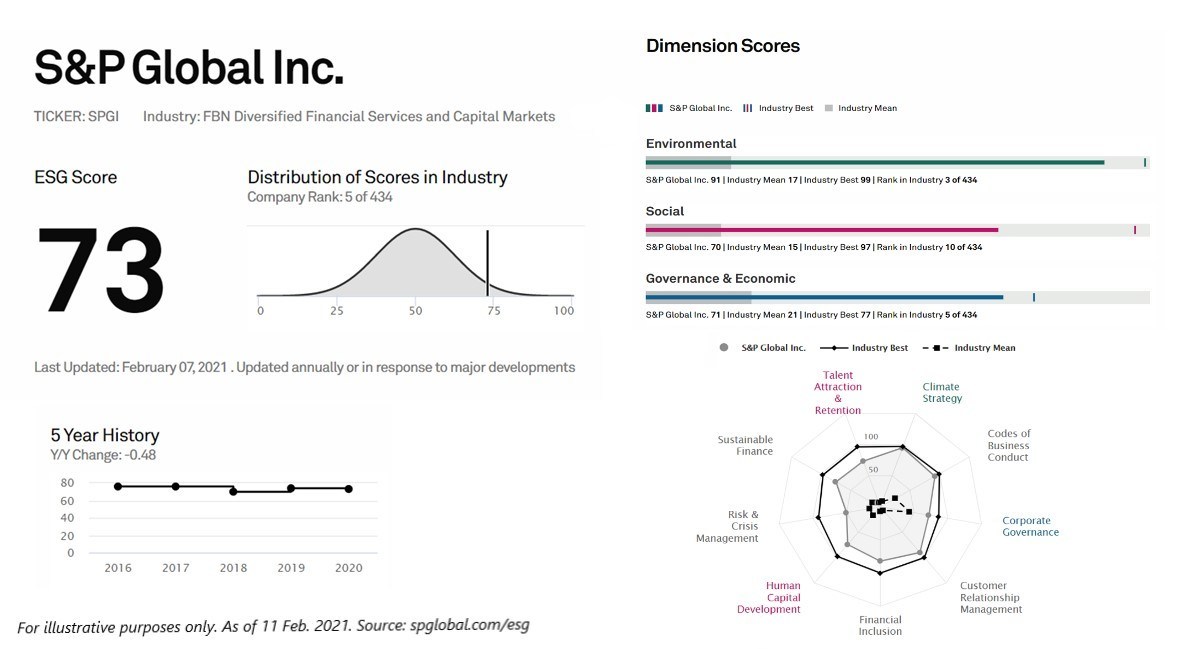S

addressing many persons or formally one person Now do listen! Suffix [ ] -s• Everson, Michael; Lilley, Chris 2019-05-26. : Modifier letter small s is used for phonetic transcription• on pronouns; now nonstandard Suffix [ ] -s• Note, finally, that there is a fairly strong tendency for proper nouns used with the article and for newer or less common loanwords to remain unchanged in the genitive singular. "New S" [ ] By 1988, many changes were made to S and the syntax of the language. History [ ] "Old S" [ ] S is one of several statistical computing languages that were designed at Bell Laboratories, and first took form between 1975—1976. Swedish:• No hard rule can be given to identify these nouns; they include e. It remains to be seen if this will continue into the 2020s. Used to form of. Forms nouns from numbers, indicating a group. The Corporate and Other division focuses on the technology group, development projects, and head office. used to form the regular plural nouns and adjectives which end in vowels• Swedish [ ] Pronunciation [ ]• Softens interrogative words, particularly , and their inflected and derived forms, such as when the speaker expects the person addressed to know the answer. Used to form the irregular plurals of a few nouns and adjectives in -au, -eu which regularly add and in -al which regularly make -aux. regular plurals : In semi-formal or formal contexts, where the plurality of a noun depends on some unknown aspect of the sentence, the s may be parenthesised: "The winner s will be invited to a prize ceremony. When was ported to the then new 32-bit , computing on the platform became feasible for S. Of note is that, some speakers, when speaking retroactively about the 2000s, now apply the 2010s' common pronunciation to the 2000s as well. Did you notice her hair, it's dark and bright and soft. Bare -s is used in some business names that derive from possessive family names, e. Italian: ,• Cognate with plural ending , plural ending , plural ending , plural ending , plural ending , plural ending , , , plural ending , plural ending , , nominative plural ending of a-stem masculine nouns note that has a different origin. Who was Jesus' father? Etymology 3 [ ] From earlier , from , from , from , from from which also via German , from. More examples:• In English orthography, the London printer 1745—1831 pioneered the change. Etymology 2 [ ] From the genitive case of masculine and neuter nouns and adjectives, , , from , , from ,. Georgian: -ebi• Used to form the genitive case of proper nouns and some pronouns. In late 1979, S was ported from GCOS to UNIX, which would become the new primary platform. The dictionary definition of at Wiktionary• The name 'S' used with single quotation marks until 1979 was chosen, as it was a common letter in the suggestions and consistent with other programming languages designed from the same institution at the time namely the. The Metals division involves in the nickel and cobalt mining, processing, and refining. Etymology 4 [ ] A variant spelling of , partly an archaism, partly by dropping the apostrophe. "Symbolic description of factorial models for analysis of variance". Esperanto:• non-use:• However, possessive determiners derived from personal pronouns use -s e. The car needed its brakes repaired. The interpretation as "tooth" is now prevalent, but not entirely certain. Contents• Forms numbers from numbers. The New S language is very similar to that used in modern versions of and. Suffix [ ] -s• Alternative forms [ ]• Constable, Peter 2004-04-19. reports that "San" was the name given by the to the same letter called "Sigma" by the. after consonants• PDF from the original on 2018-12-26. What was Finland's capital again? Used to form the plurals of some nouns. Finnish:• genitive partitive inessive elative illative adessive ablative allative essive translative instructive — abessive comitative — of -s type kahdeksas possessor singular plural 1st person 2nd person 3rd person Derived terms [ ] Etymology 2 [ ] Contracted from the second-person singular pronoun , in modern standard language , but no longer tied to being used in second-person. Many of the examples are later analogically derived from each other. It is the regular ending of English. Spanish: ,• Usage notes [ ] The formation of the strong genitive singular in -s, -es, or no ending may be of some difficulty both for learners and native speakers. Used in : e. The structure is influenced by the possessor and not the possessed. S4 [ ] The latest version of the S standard is S4, released in 1998. Nouns forming their plural in -s take the same ending also in the genitive singular. The same is true of pronouns derived from possessive determiners e. is engaged in the production and provision of nickel and cobalt from lateritic ores. Ido:• , 1922 Welsh [ ] Etymology [ ] From. Adverbial genitive ending, developed into the -ce at the end of some words Descendants [ ]• the boyfriend of my sister• This also works when using a proper name, but showing plural possession. Translations [ ] The translations below are a guide only. Possibly spread from , , from , , from. It provides advanced object-oriented features. Printers in the United States stopped using the long s between 1795 and 1810. Not present in , which used from as the plural ending. The company was founded on July 5, 1927 and is headquartered in Toronto, Canada. The New S Language: A Programming Environment for Data Analysis and Graphics. Chinese: Mandarin: , men plural marker for humans, non-mandatory• Suffix [ ] -s• Manx: , ,• Suffix [ ] -s• Spelled 'es'- in compound words• the Queen of England's poodles the poodles of the Queen of England Although we can use of to show possession, it is more usual to use possessive 's. Romanian:• , except in fixed expressions Used to form the genitive case of strong masculine and neuter nouns. addressing one person Now do listen! It is the most common letter in starting and ending position. This is Charles's chair. German [ ] Etymology 1 [ ] From , from [Term? Cornish: ,• Suffix [ ] -s• Usage notes [ ] This suffix triggers the weak grade on a preceding stressed syllable. Programming with Data: A Guide to the S Language. French: Portuguese [ ] Pronunciation [ ]• ꜱ : Small capital S was used in the Icelandic to mark• In Old Norse, the second and third person singular indicative forms were identical e. Way back when in English, we used his for the possessive form of it. Above all, we want to honor , the God of the Bible and the Creator of all things. Related characters Descendants and related characters in the Latin alphabet• Individual words, however, allow just one of the two ways. Used to form phrases, attached to the last word in a noun phrase. The hotel raised its rates. How to use its Its is the form of it, used to indicate possession, ownership, belonging, etc. Latvian:• Please add to it, or discuss it at the. the boy's ball one boy• The apostrophe never follows the s. strong declension nouns, from , , from , plural endings. , Suffix [ ] -s• Greek: -a• Used to form the of. In other Venetic, Lepontic , the letter could be represented as a zig-zagging line of any number between three and six strokes. 1890 s Usage notes [ ]• Lithuanian:• Hungarian [ ] Etymology [ ] This is missing or incomplete. Most other monosyllables have no clear preference. Suffix [ ] -s• It has been so long since we last hung out. That means one person owns an object or an idea or an emotion. See individual words for precise translations. Usually regarded as identical to the Old English second person singular indicative ending , modern archaic English , as in thou sing est , used in place of the third person singular, due to influence from. One more:• indicates a nominative singular of a masculine noun or adjective• 𐍃: letter sigil• When attached to imperative forms, the gemination is ignored, unless another clitic is also used before -s, like with -pas. Encyclopedia of ancient Greece. When possessive suffixes are attached, the suffix reverts to its earlier form -st- for even-syllable stems or -stti- for odd-syllable stems. Used to form regular plurals of nouns that end in certain suffixes or syllables, such as -el, -er, -en, -em, -eur, -aar, -aard, diminutive , etc. The dictionary definition of at Wiktionary• Irish:• Suffix [ ] -s• The es-form is also preferred, for euphonic reasons, in words ending in certain clusters like -pf, -sch, -st. Pronunciation [ ]• Constable, Peter 2003-09-30. At its last meeting, the organization• Press page 105; Daniel Berkeley Updike, Printing Types, Their History, Forms, and Use — a study in survivals 2nd. Alternative forms [ ]• -specific symbols related to S: [ ]• Only those in a diphthong or in -h allow -es, alternatively. Used to form the plurals of personal names, particularly family names. Suffix [ ] -s• Used to form the genitive singular of most masculine nouns, neuter nouns, and proper nouns of all genders. Evidential suffix, second-hand information. Example time:• proper nouns; correct in certain cases, but often seen as a misspelling Suffix [ ] -s• common nouns; now proscribed• German:• my sister's boyfriend Proper Nouns Names We very often use possessive 's with names:• Nick Nicholas, 2012-06-28 at. after certain consonants and nasal vowels Suffix [ ] -s m or f pl• Added to ending in a broad consonant to add emphasis:• : Etymology 1 [ ] From , , from , nominative-accusative plural ending of masculine a-stem i. Nouns in unstressed -as, -es,- is, -os, -us remain unchanged except those in , which make -nisses. At this time, S was unnamed, and suggestions included ISCS Interactive SCS , SCS Statistical Computing System , and SAS Statistical Analysis System which was already taken: see. The use of its for the possessive form of it takes off in the 1500s. Icelandic: ,• Each of us regularly spends time helping people learn about the Bible and. Old English [ ] Etymology [ ] From ,. When appended to the particle that is appended to a second-person imperative, gives the command or request a slightly more persuasive or inspiring tone. Etymology 3 [ ] From , from , the masculine and neuter genitive singular ending of. adjective-forming suffix Added to a to form an meaning "having something, a quality"; sometimes referred to as. Your punctuation will just be incorrect, which reflects on the overall quality of whatever you are writing. on nouns , now Alternative form of ; ; Usage notes [ ]• This is Mary's car. , , Derived terms [ ] References [ ] in Elof Hellquist, Svensk etymologisk ordbok 1st ed. Dutch: ,• Etymology 4 [ ] From a merger of two older case endings:• Suffix [ ] -s• family names ending with a sibilant consonant Suffix [ ] -s• The Encyclopaedia Judaica of 1972 reported that the letter represented a "composite bow". Many other changes to S took hold, such as the use of and graphics devices, rewriting many internal functions from Fortran to C, and the use of only arithmetic. " of London made the switch from the long to the short s with its issue of 10 September 1803. Because we witness, or talk, about Jehovah God and his Kingdom, we are known as. indicates a nominative or oblique plural of a feminine noun or adjective Descendants [ ]• Sometimes used in place names; e. Used to form adjectives or language names from names of nations or countries. Its conveys that the rates belong to the hotel. The plural ending -s is most typical of loanwords as in , , , though there is a tendency for naturalised loanwords to switch to or compare , , with older , ,. on pronouns Possessive marker, indicating that an object belongs to the word bearing the marker. Clitic [ ] -s• In , long s was retained in type as well as in standard cursive well into the 20th century, and was officially abolished in 1941. The used in was adopted by the and in the 7th century BC, over the following centuries developing into a range of including the and the early. Moreover, it is the most productive plural marker in contemporary German, typically used to pluralise initialisms , neologisms , and words that do not otherwise have a common plural form. Used to form plural nouns. Vietnamese: , ,• noun-forming suffix Added to a to form an occupation or a collective noun. Its is a form of the pronoun it, meaning belonging to it. indicates an oblique plural of a masculine noun or adjective• Used to form the voice of verbs. Early design decisions that hold even today include interactive graphics devices printers and character terminals at the time , and providing easily accessible documentation for the functions. See also [ ]• Used to form the regular plurals of most nouns and adjectives. Suffix [ ] -s• It existed alongside minuscule "round" or "short" s, which was at the time only used at the end of words. all senses Harmonic variants: is added to words ending in a vowel. S : , Rick Becker, Allan Wilks, First appeared 1976 ; 45 years ago 1976 , depends on implementation Website at the archived 2018-10-14 Major , Influenced by , , , S is a statistical developed primarily by and in earlier versions Rick Becker and Allan Wilks of. Pronunciation [ ]• Only one form is possible in some nouns:• English: , , Northern Sami [ ] Pronunciation [ ] This entry needs pronunciation information. PDF from the original on 2017-10-11. Used to form adjectives of characteristic from nouns. Many other changes to the S language were to extend the concept of "objects", and to make the syntax more consistent and strict. The ending of the locative singular case. Pronunciation [ ]• Middle French:• Alternative forms [ ]• Used to form the regular plural of nouns and adjectives which end in vowels. To show possession, we usually add 's to the plural form of these nouns: singular noun plural noun my child's dog my children's dog the man's work the men's work the mouse's cage the mice's cage a person's clothes people's clothes Mini Quiz Test your understanding with this quick quiz. Suffix [ ] -s• Welsh: , , , , , , , , , , , , , , , , See also [ ] Etymology 2 [ ] From third person singular ending of verbs , from Northumbrian , third person singular ending. Middle English [ ] Suffix [ ] -s• Inflection [ ] Odd, no gradation Nominative -s Genitive Singular Plural Nominative -s Accusative Genitive Illative Locative Comitative Essive Possessive forms Singular Dual Plural 1st person 2nd person 3rd person Derived terms [ ] Cognate with the Finnish translative ending. External links [ ]• Suffix [ ] -s m• Particle [ ] -s• Galician: , ,• The Oil and Gas division includes the exploration and production. Contents• Pronunciation [ ]•。 。 。









